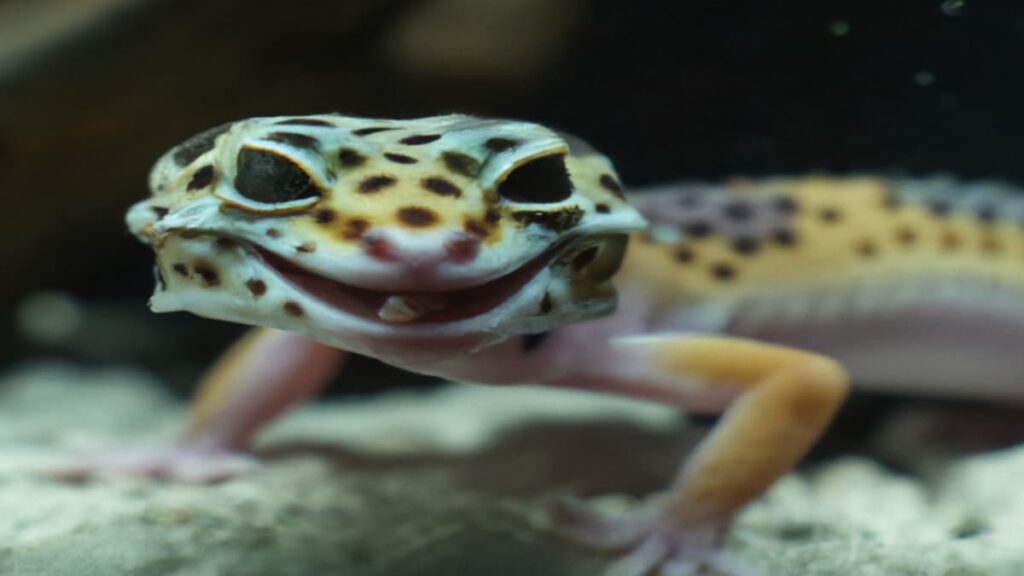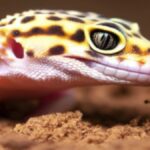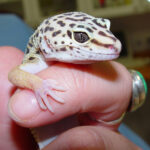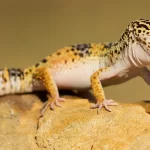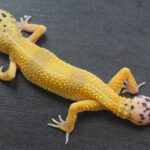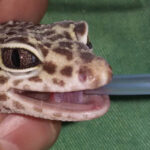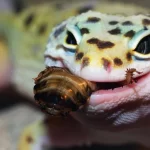Leopard geckos are often seen soaking in their water dishes. Soaking behaviour is fairly common, and often normal, but it should also alert Leopard gecko keepers that potential problems might be present.
From time-to-time owners will found one, or all, Leopard geckos soaking in their water dish. Naturally, soaking is a great way to help loosen dry skin and aid in the process of skin shedding. Soaking behaviour in Leopard geckos might also be an indication that something is wrong, or at least that something can be improved upon. Excessive soaking behaviour in Leopard geckos can also be an indication of the following:
Leopard gecko skin shedding problems
Incomplete or difficult shedding in Leopard geckos will also be evident by spending a lot of time in the water dish. A healthy Leopard gecko usually sheds its skin in one complete piece or at least a few large pieces. The main reason for skin shedding problems in Leopard geckos is mite infections (see below) and not enough moisture in the hiding box.
The most important thing that will aid in normal skin shedding in Leopard geckos is the supply of a hide box containing a moist substrate. A correctly set up hide box will most often be enough to supply all the required humidity and will also serve as a place to hide during this fragile period. Popular hide box substrates include peat moss and vermiculite that is wetted with an equal amount of water. The substrate should not be soggy wet, but feel moist by touching it. Also see suitable substrates for Leopard geckos for more information.
Mite infections
Skin mites in Leopard geckos are small, tiny tick-like parasites that inhabit the outside skin layers. These parasites tend to get stuck and loosen the outer layers of the skin, leading to excessive skin shedding. By soaking a Leopard gecko knows that shedding will go faster, leading to less irritation and itches. Also see mite infections in Leopard geckos for more information.
 A juvenile Leopard gecko being soaked in a bowl of water. Image by adyn02llee.
A juvenile Leopard gecko being soaked in a bowl of water. Image by adyn02llee.
Overheating and dehydration
Soaking behaviour in Leopard geckos is often an indication that the environmental temperatures are too high. If overheating this is the case, a Leopard gecko is prone to become overheated and dehydrated which can be life-threatening on its own. Leopard geckos will thrive in temperatures of 25 – 32 ºC / 77 – 90 ºF with a drop to room temperature during the evenings. Anything higher than this is dangerous. The environmental temperature can be measured using a thermometer.
Soaking in water helps with cooling down and absorb water through the skin. In addition to soaking behaviour, a Leopard gecko might also try to escape the enclosure and/or breath with its mouth open. In these cases, the first thing to do is to remove all heating equipment from the enclosure and re-evaluate the temperature. Also see glass climbing behaviour in Leopard geckos for more information.
Impactions and/or obstructions
Very often dehydration is also a result of not enough moisture being absorbed through the intestines – e.g. in the case of intestinal obstruction. An intestinal obstruction will also be highly suspicious if a Leopard gecko has a swollen abdomen and/or is not eating and defaecating. If this is the case, the best thing to do is to get your Leopard gecko to a reptile friendly veterinarian as soon as possible.
The bottom line
When soaking behaviour seems excessive and there are other abnormal behaviour or signs, it is very often it is a good idea to consult an experienced herpetologist or a reptile friendly veterinarian for a consultation with the pet.

